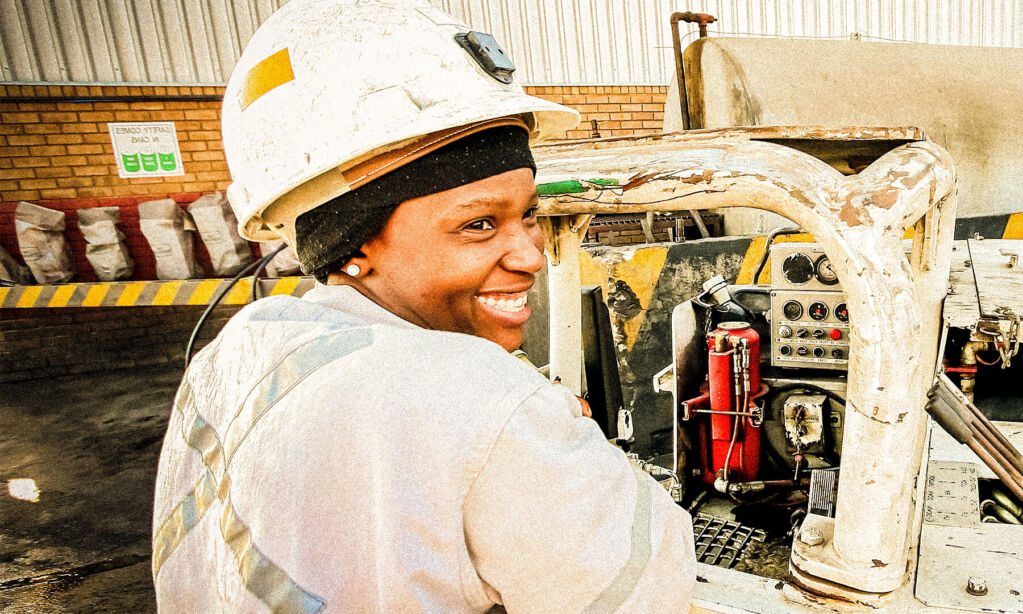This is part two of our Fall 2022 Bumpy Ride labour market series update. It presents up-to-date information on women’s economic security, unpacking national-level statistics and identifying emerging economic trends that impact women’s economic standing. More updates to come in the weeks ahead.
Quick takeaway:
The rate of employment among racialized women aged 25 to 54 years reached 76 per cent in September 2022—an increase of almost one percentage point from March 2022, narrowing the employment gap with non-racialized women (at 82 per cent).
Marginalized women sharing in employment gains but barriers persist for women aged 25-54
Women with disabilities, racialized workers, Indigenous Peoples and other precarious workers experienced the onslaught of the pandemic head on. They were over-represented among the low-wage, precarious workers in public-facing industries most impacted by health restrictions, and their economic recovery has unfolded at a much slower pace than more privileged workers. More recently, however, several groups have made important employment gains.
The rate of employment among racialized women aged 25 to 54, for instance, reached 76 per cent in September 2022—an increase of almost one percentage point from March 2022, narrowing the employment gap with non-racialized women (at 82 per cent). The largest gains were reported among Arab women, Black women, and Southeast Asian women, as shown in Figure 1 above, while Japanese women, West Asian women, Chinese women and South Asian women posted more modest growth.
Likewise, new immigrant women—defined as those who have been in Canada for less than 10 years—have shared in employment gains. Immigrant workers were especially hard hit during the initial lockdown, accounting for 37 per cent of job losses during this period as compared to their 26 per cent population share. But levels of employment among new immigrant women (aged 15 and older) bounced back relatively quickly. In particular, the employment rate of immigrant women living in Canada for less than five years has jumped by almost 10 percentage points since February 2020, reaching 65.9 per cent in September 2022. Rates of employment among new immigrant women now exceed those of Canadian-born women by roughly seven percentage points.
But it is important to unpack these headline statistics. Population aging and an increase in women leaving the labour market are creating downward pressure on the 15+ employment rate, notably among Canadian-born women, thus reducing the employment gap with immigrant women. For immigrant women aged 25 to 54, however, employment gaps persist as shown in Figure 2. In September 2022, 75.5 per cent of all immigrant women aged 25 to 54 years were employed compared to 82.8 per cent of Canadian-born women, resulting in an employment gap of 7.3 percentage points. This gap has narrowed over the last year by 1.9 percentage points, but it is still substantial.
The other key issue to watch here is the growing number of migrant workers on tied, or closed, work permits, and international students—two groups that are excluded from many basic employment standards and community services, such as health care. Governments, such as Quebec’s, are turning to the temporary foreign worker program to fill critical labour shortages in fields such as health care, but they are not taking action to facilitate access to permanent residency—thus perpetuating the exploitation of these workers, a growing proportion of whom are women.
The employment gap among Indigenous women has narrowed as well: The employment recovery of Indigenous women was much delayed. But starting in 2021, their employment rate recovered, surpassing the rate of non-Indigenous women in December 2021. The gap among those aged 25-54 years, however, is still roughly 10 percentage points.
Indigenous women workers also faced a sharp contraction in their employment when the pandemic hit, as Figure 3 shows. What stands out here is the degree to which their economic recovery lagged behind other groups of women and Indigenous and non-Indigenous men. It wasn’t until early in 2021 that their rate of employment started to pick up, increasing roughly 10 percentage points over 2021, closing the employment gap with non-Indigenous women. In September 2022, 60.1 per cent of Indigenous women aged 15 and older were employed compared to 57.5 per cent of non-Indigenous women in this age group. In particular, there were sizable employment gains among Métis women.
Again, there are important differences between age groups. Indigenous women’s rates of employment are slightly higher among young people (15-24 years old) and women over age 55, but much lower among women in the 25-54 age group compared to non-Indigenous women in these age groups. The employment gap between Indigenous women in the core working-age group and non-Indigenous women is still roughly 10 percentage points.
The impact of population aging and early retirement is important context for understanding employment trends among Indigenous, newcomer and racialized communities—whose populations are comparatively younger than their non-Indigenous, Canadian-born and non-racialized counterparts, respectively.
Paying attention to the different experiences of historically oppressed groups is essential to accurately assessing women’s economic security and prioritizing the needs of marginalized women—particularly in the face of the economic challenges ahead.
About this update

This Bumpy Ride Update series is part of a larger project, Beyond Recovery, which is working to support and advance a gender-just recovery from the COVID-19 pandemic. The project’s goals are to document and analyze women’s experiences, with a particular focus on those of marginalized women in hard-hit sectors, and to provide evidence-based policy proposals to ensure those who are most impacted in this pandemic are front and centre in Canada’s recovery. The Fall 2022 update draws on the annual and monthly Labour Force Survey and other related sources of information, highlighting differences between women and men as well as between different groups of women. Considering differences in the experiences of women with intersecting identities is crucial to understanding the impact of the pandemic and efforts to craft a fair and inclusive recovery, attentive to the experiences and struggles of marginalized and under-represented groups.
See the first Labour Market Update, published in May: Katherine Scott, A Bumpy Ride: Tracking women’s economic recovery amid the pandemic. Canadian Centre for Policy Alternatives, May 31, 2022.
This project has been funded in part by Women and Gender Equality Canada.








